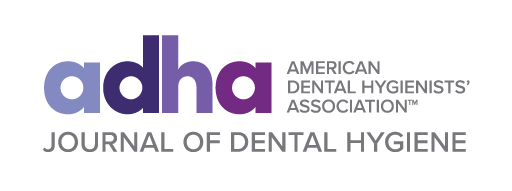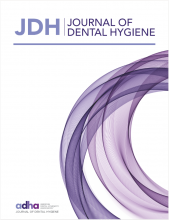We were both privileged to attend the recent EuroPerio conference in Amsterdam this past June, the largest periodontal conference in the world. With over 10,000 attendees from around the globe, this year's highlight was the presentation of the work undertaken by the 110 experts participating in the World Workshop on the Classification of Periodontal and Peri-Implant Diseases and Conditions. The resulting new classification of these diseases and conditions is important for all dental hygiene professionals. Given that the former classification is nearly two decades old (1999), it was truly time for a change to account for new knowledge and its implications.
Development of the new classification required an extensive review of the scientific literature and its interpretation that was completed by experts in four separate working groups: Periodontal Health and Gingival Diseases and Conditions; Periodontitis; Manifestations of Systemic Diseases and Conditions; and Peri-Implant Diseases and Conditions. Once work began, it was recognized that disease severity was not simply the mere presence of plaque, as everyone is not the same. Consideration for classifying disease based on plaque microbes was also found not to be a viable option. The recent Human Microbiome Project has revealed the presence of over 1,000 oral microbes alone and has introduced the concept that symbiosis is destroyed when biofilm accumulates, thus creating a dysbiosis. Secondary descriptors such as extent, rate of progression, diagnostic biomarkers and patient outcomes were also considered. However, once the working groups examined the evidence, they agreed that the new system must first be designed to prevent overtreatment, thus leading to the creation of “Case Definitions” for each of the periodontal and peri-implant diseases and conditions.
One notable change to the new system is that no evidence was found to justify the distinction between chronic and aggressive periodontitis as two separate disease entities; both are now under the single category of “Periodontitis.” Additionally, a new category of “Periodontal Health,” has been added; however, necrotizing diseases and periodontitis as a manifestation of systemic disease remain the same.
Overall, the resulting new classification is very different from the prior one as the periodontitis category is based on the oncology system of “Staging” and “Grading” of disease. Staging classifies both severity and extent of current tissue loss, including tooth loss due to periodontitis, while also incorporating the level of complexity in the long-term management of both function and esthetics. Grading, on the other hand, incorporates four biological dimensions: history-based periodontitis progression, risk for further periodontitis progression, anticipated inferior treatment outcomes, and risk that the disease or its treatment may have a negative impact on the general health of the patient. This new system is aligned with the principles of “Personalized Medicine,” based on the multifactorial etiology of disease, and is believed to optimize care and improve prognosis while being adaptable over time.
The presentation concluded with a practical 4-step approach for implementing the new classification for periodontitis:1
Step 1: Initial Case Overview: Based on full mouth radiographs, full mouth probing depths, and missing teeth; categorize case as either Mild to Moderate Periodontitis or Severe/Very Severe Periodontitis.
Step 2: Determine the Stage (I, II, III, IV): By taking into consideration maximum CAL or bone loss; confirmation of bone loss patterns (horizontal or vertical); tooth loss due to periodontitis; determine case complexity.
Step 3: Determine the Grade (A, B or C): Based on health history/risk of progression/age; risk factors; consideration of medical status and systemic inflammatory considerations; response to scaling and root planing and plaque control; detailed assessments, refine grade.
Step 4: Develop a Treatment Plan based on Stage and Grade: Standard treatment (Mild to Moderate Periodontitis, Stages I & II; Grade A or B); Complex and/or Multidisciplinary treatment (Severe/Very Severe Periodontitis, Stages III & IV; Grade B or C)
We hope that we have been able to provide you with some of the background regarding the new periodontal disease classification system. However, coverage of all the specific details is beyond the scope of this editorial. We urge you to read the recently published article by Caton et al.2 in the June 2018 supplement to the Journal of Periodontology for a more in-depth introduction into the new system.
It is important for dental hygienists to begin using the new classification to be current in clinical practice and in the preparation of future practitioners. The new system will also influence how inclusion criteria are defined for future periodontal and peri-implant research.
Footnotes
Jane L. Forrest, EdD, RDH, is a professor of clinical dentistry and Director, National Center for Dental Hygiene Research and Practice, Ostrow School of Dentistry, University of Southern California, Los Angeles, CA.
Salme E. Lavigne, PhD, RDH is the Scientific Editor of the Canadian Journal of Dental Hygiene and Senior Scholar, School of Dental Hygiene, University of Manitoba, Canada.
- Copyright © 2018 The American Dental Hygienists’ Association










